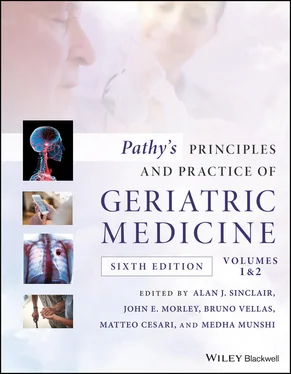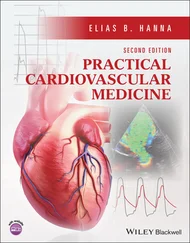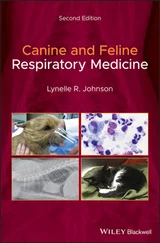Pathy's Principles and Practice of Geriatric Medicine
Здесь есть возможность читать онлайн «Pathy's Principles and Practice of Geriatric Medicine» — ознакомительный отрывок электронной книги совершенно бесплатно, а после прочтения отрывка купить полную версию. В некоторых случаях можно слушать аудио, скачать через торрент в формате fb2 и присутствует краткое содержание. Жанр: unrecognised, на английском языке. Описание произведения, (предисловие) а так же отзывы посетителей доступны на портале библиотеки ЛибКат.
- Название:Pathy's Principles and Practice of Geriatric Medicine
- Автор:
- Жанр:
- Год:неизвестен
- ISBN:нет данных
- Рейтинг книги:3 / 5. Голосов: 1
-
Избранное:Добавить в избранное
- Отзывы:
-
Ваша оценка:
- 60
- 1
- 2
- 3
- 4
- 5
Pathy's Principles and Practice of Geriatric Medicine: краткое содержание, описание и аннотация
Предлагаем к чтению аннотацию, описание, краткое содержание или предисловие (зависит от того, что написал сам автор книги «Pathy's Principles and Practice of Geriatric Medicine»). Если вы не нашли необходимую информацию о книге — напишите в комментариях, мы постараемся отыскать её.
Pathy’s Principles and Practice of Geriatric Medicine
Pathy's Principles and Practice of Geriatric Medicine — читать онлайн ознакомительный отрывок
Ниже представлен текст книги, разбитый по страницам. Система сохранения места последней прочитанной страницы, позволяет с удобством читать онлайн бесплатно книгу «Pathy's Principles and Practice of Geriatric Medicine», без необходимости каждый раз заново искать на чём Вы остановились. Поставьте закладку, и сможете в любой момент перейти на страницу, на которой закончили чтение.
Интервал:
Закладка:
The exact incidence of de novo MDS remains unclear but appears to be greater than the incidence of acute myelogenous leukaemia (AML). 10The SEER (Surveillance, Epidemiology, and End Results) Program first began collecting information on MSD in 2001, and the first three years of data showed a median age of 76 at MDS diagnosis, with almost all cases (86%) occurring in individuals 60 and older. 11
The epidemiology of MDS is reflective of the disease biology, which is likely a consequence of the ageing process. Indeed, age is the primary risk factor for developing MDS; as human age, hematopoietic stem cells tend to accumulate mutations in DNA.
Conservative estimates from cancer databases suggest that approximately 10,000 cases are diagnosed annually in the US. 11,12The actual incidence of MDS is likely higher than that predicted by cancer databases since nonspecific symptoms may evade detection in the early stages of the disease and suspected cases may not undergo definitive testing (i.e. bone marrow biopsy) due to comorbidities. Investigations that have analysed reimbursement claims have estimated the incidence in the US to be 30,000 to 40,000 new cases per year. 13,14
The risk of developing MDS increases with age. The estimated incidence in the SEER‐Medicare population is 75 cases per 100,000 people over age 65 compared to 20 cases per 100,000 previously reported by SEER alone, suggesting the annual incidence in older adults is perhaps three times higher. This increase is probably due in part to an increasing population of people over age 65 and increased recognition and diagnosis of the disease by haematologists and oncologists with the development of more effective therapies.
The age‐adjusted incidence of MDS is slightly higher among males than females. However, these are likely underestimations of this disease's true incidence due to the underdiagnosis of MDS in the past.
There are several well‐known risk factors for the development of MDS, including exposure to organic solvents (e.g. benzene), ionizing radiation, and prior chemotherapy (e.g. alkylating agents). Inherited genetic abnormalities (e.g. trisomy 21, Fanconi anaemia, Bloom syndrome, ataxia‐telangiectasia) and other benign hematologic diseases (e.g. paroxysmal nocturnal hemoglobinuria, congenital neutropenia) have also been associated with MDS.
The incidence of therapy‐related myelodysplasia is also increasing. Therapy‐related MDS can result from prior exposure to ionizing radiation or chemotherapy. Prior exposure to alkylating agents is associated with the highest risk of MDS and has very distinct cytogenetic abnormalities, such as loss of the long arm of chromosomes 5 and/or 7. The risk for developing therapy‐related MDS or AML has been described in long‐term survivors of cancers treated with semustine (methyl‐CCNU). The actuarial risk is between 6 and 9% in patients treated for Hodgkin’s disease and 17% in patients treated for multiple myeloma. The risk of developing MDS increases with the use of regional radiation therapy following treatment for common cancers such as breast cancer, small cell lung cancer, and testicular cancer. Topoisomerase II inhibitors, such as epipodophyllotoxins and anthracyclines, have also been associated with therapy‐related AML, but usually without an MDS prodrome, and commonly involve chromosomal abnormalities such as 11q23, 3q26, and 21q22. 15
The clinical presentation of MDS is varied. Symptoms for the most part are non‐specific and depend on the number and severity of cytopenias present. The majority of patients with MDS have a macrocytic anaemia with or without additional cytopenias. Others present symptoms or complications resulting from a previously unrecognized cytopenia: dyspnoea on exertion, fatigue, lethargy, malaise, dizziness, and even angina. 2Neutropenic patients may develop severe systemic infections, and infection represents a primary cause of death in many cases of MDS. The increased infectious risk may be a result of neutrophil dysfunction secondary to impaired chemotaxis and/or microbial killing. 16,17T‐cell function is thought to remain intact, and therefore patients with MDS less commonly develop viral or mycobacterial infections in the absence of treatment with immunosuppressive agents. 16Other symptoms may include easy bruising or bleeding, a common manifestation of thrombocytopenia and dysfunctional platelets.
The physical findings of MDS are likewise non‐specific and usually reflect underlying cytopenias if present. Of note, patients with chronic myelomonocytic leukaemia (CMML) may have splenomegaly, an unusual finding in patients with other subtypes of MDS.
Elderly patients and risk assessment
Prognosis and treatment decisions in MDS are guided by a patient's estimated disease risk. Several risk scores have been developed to predict the natural history of the disease, specifically length of survival and risk of progression to AML in the absence of intervention. These risk scores integrate disease features at diagnosis, including cytopenias, presence of excess bone marrow myeloblasts, and type of cytogenetic abnormalities. 18
Given the older age of the MDS population, it is critical to consider the impact of comorbidity and frailty. The impact of comorbidity on MDS prognosis is of practical importance to the treating oncologist. Several studies have recently defined the impact of comorbidity on prognosis in MDS patients and collectively generated a body of work demonstrating that increased comorbidity negatively impacts survival (even accounting for traditional MDS risk factors) and that integration of comorbidity assessment to traditional risk stratification can improve prognostic accuracy. 19‐23
Risk stratification for older adults has primarily focused on biology, performance status (Eastern Cooperative Oncology Group [ECOG] or Karnofsky) and chronological age. Older chronologic age has been a consistent predictor of poor outcomes, contributing to the controversy surrounding optimal treatment strategies for older adults. Chronologic age, however, is a surrogate marker for specific impairments that increase vulnerability to treatment toxicity and poor outcomes. To date, few studies have focused on the measurement of underlying impairments that better reflect physiologic age and reserve capacity during treatment. 24,25
Frailty is a general state of physiologic decline that results in a ‘state of high vulnerability to adverse health outcomes’ in the face of medical stressors events. 26Frailty may be particularly prevalent among older patients with hematologic malignancies; more than half of them have evidence of malnutrition, and more than a third have impaired physical function. 27Moreover, hematologic malignancies and their treatment can lead to frailty in a patient of any age. Frailty is associated with increased chemotherapy‐related toxicity, poor response to therapy, and mortality in solid and hematologic malignancies. 28,29Accordingly, leading professional organizations, such as the American Society of Clinical Oncology (ASCO) and the National Comprehensive Cancer Network, now recommend that geriatric and frailty assessments must be incorporated into the routine care of older patients with cancer. 30
While challenges exist to incorporating frailty assessment into clinical oncology practice, routine frailty screening has been shown to be feasible for patients with MDS. Such screening enhances the ability of oncologists to make appropriate MDS treatment recommendations. In addition, routine frailty assessment by oncology providers can identify patients who would benefit from comprehensive geriatric assessment (CGA) and management with a geriatrician concurrent with their MDS care. 31
Gait speed and grip strength are easily obtainable objective measures of physical function that take no more time to measure than a typical vital sign. Gait speed accurately predicts mortality, disability, and hospitalizations across populations worldwide. 32‐34Recent guidelines by ASCO recommend gait speed as a practical assessment of function and physical performance in older adults with cancer. 35Grip strength is primarily a measure of physical function and is not as well established as gait speed as a marker of frailty, but it may be useful in patients who are in clinics.
Читать дальшеИнтервал:
Закладка:
Похожие книги на «Pathy's Principles and Practice of Geriatric Medicine»
Представляем Вашему вниманию похожие книги на «Pathy's Principles and Practice of Geriatric Medicine» списком для выбора. Мы отобрали схожую по названию и смыслу литературу в надежде предоставить читателям больше вариантов отыскать новые, интересные, ещё непрочитанные произведения.
Обсуждение, отзывы о книге «Pathy's Principles and Practice of Geriatric Medicine» и просто собственные мнения читателей. Оставьте ваши комментарии, напишите, что Вы думаете о произведении, его смысле или главных героях. Укажите что конкретно понравилось, а что нет, и почему Вы так считаете.












